Woman with Camera Outdoors c. 1917
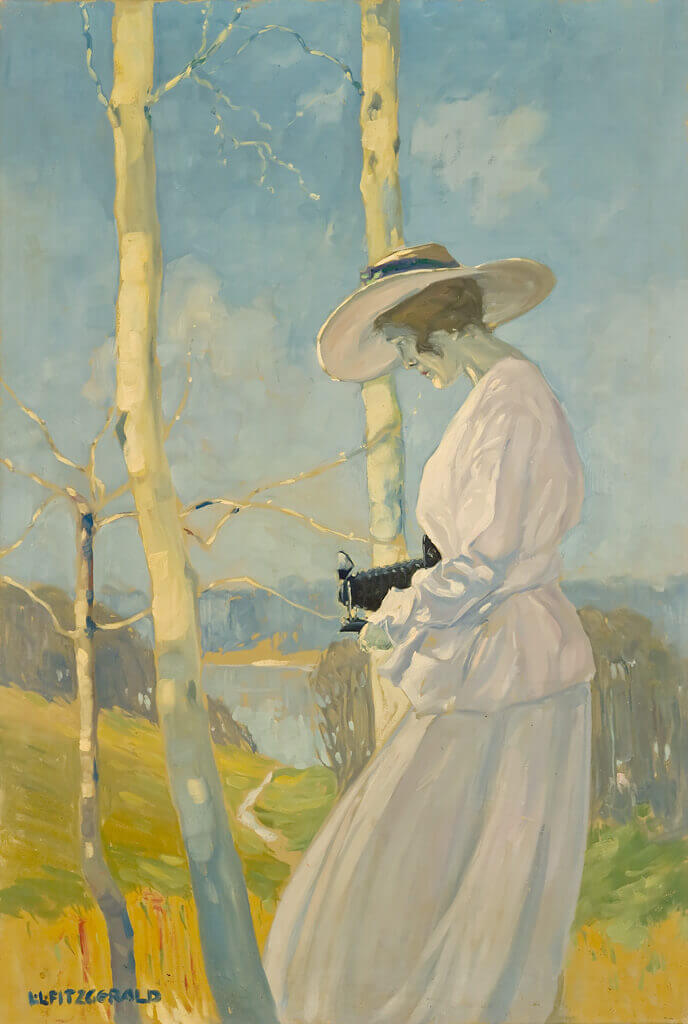
Lionel LeMoine FitzGerald, Woman with Camera Outdoors, c. 1917
Oil on canvas, 107 x 73.5 cm
Winnipeg Art Gallery
The experience Lionel LeMoine FitzGerald gained as a youth in the commercial art world contributed to his formation as an artist. During his nine years working in commercial art, FitzGerald would have been familiar with the advertising images of Coles Phillips (1880–1927) and McClelland Barclay (1891–1943), whose fashionable illustrations of women were ubiquitous on the covers and in the pages of popular periodicals such as LIFE, Good Housekeeping, The Saturday Evening Post, and Ladies’ Home Journal.
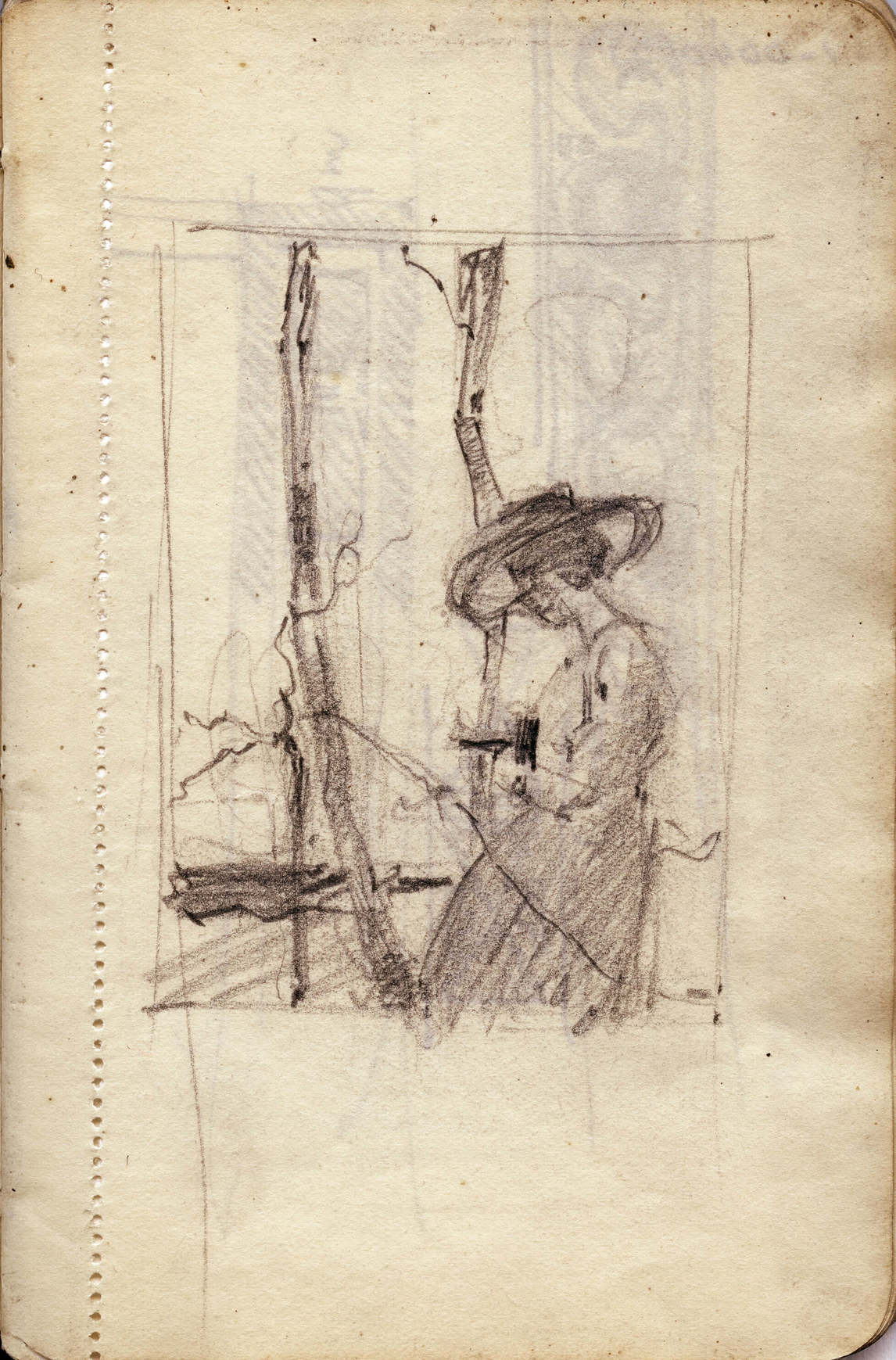
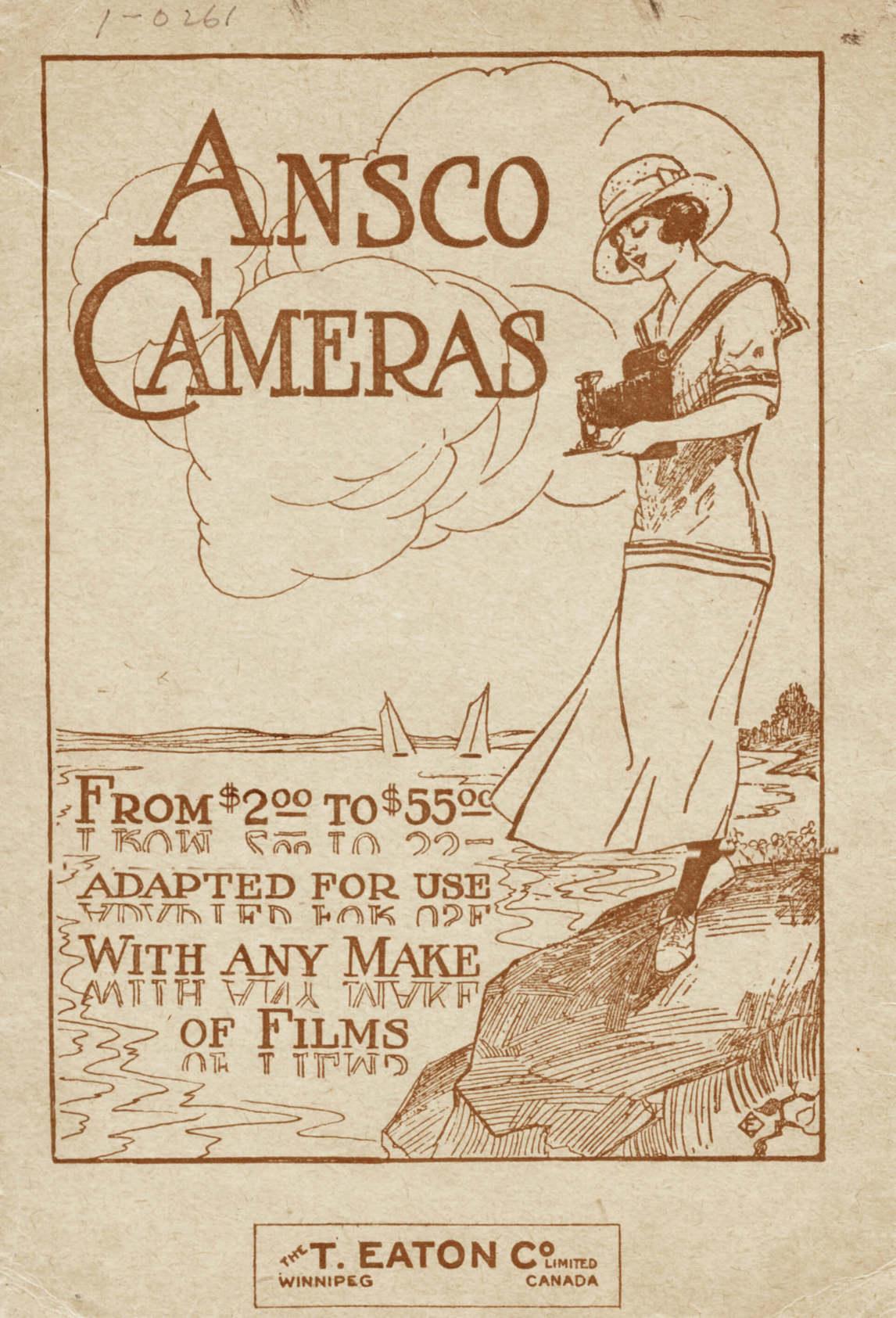
The June 1917 magazine cover illustration of Motor in Canada featured a watercolour by FitzGerald depicting a female golfer looking at a landscape. The image of a contemporary, stylish, and outdoors-type of woman must have appealed to FitzGerald, as it became the subject of one of his largest early paintings, Woman with Camera Outdoors. His initial idea was first expressed in a small sketchbook drawing of a female figure standing in a landscape wearing a broad-brimmed hat and holding a camera. The ultimate source of this image may be traced to a T. Eaton Company Limited, Winnipeg, folder advertising Ansco Cameras that FitzGerald had saved with his papers.
The camera in the painting resembles a Folding Pocket Ansco, available for purchase from Eaton’s at that time. FitzGerald’s willingness to feature a camera in such a major early painting raises the question of whether photography played a role in his art. Irene Heywood Hemsworth (1912–1989) recalled that he would borrow a Leica camera from Arnold Brigden (1886–1972) and knew how to develop and print his own negatives. She noted that he would also meticulously record the time and light mechanics on the back of each print. The role of photography in FitzGerald’s work, both as an art form and as an aide-mémoire, deserves further investigation based on the examples of FitzGerald’s photography in his archive.

 About the Author
About the Author
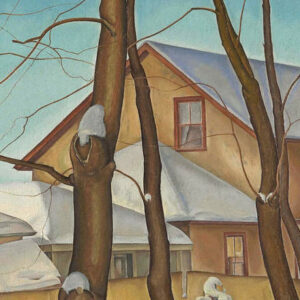 More Online Art Books
More Online Art Books
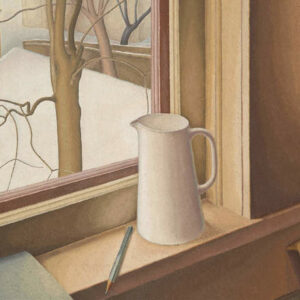 Acknowledgements
Acknowledgements